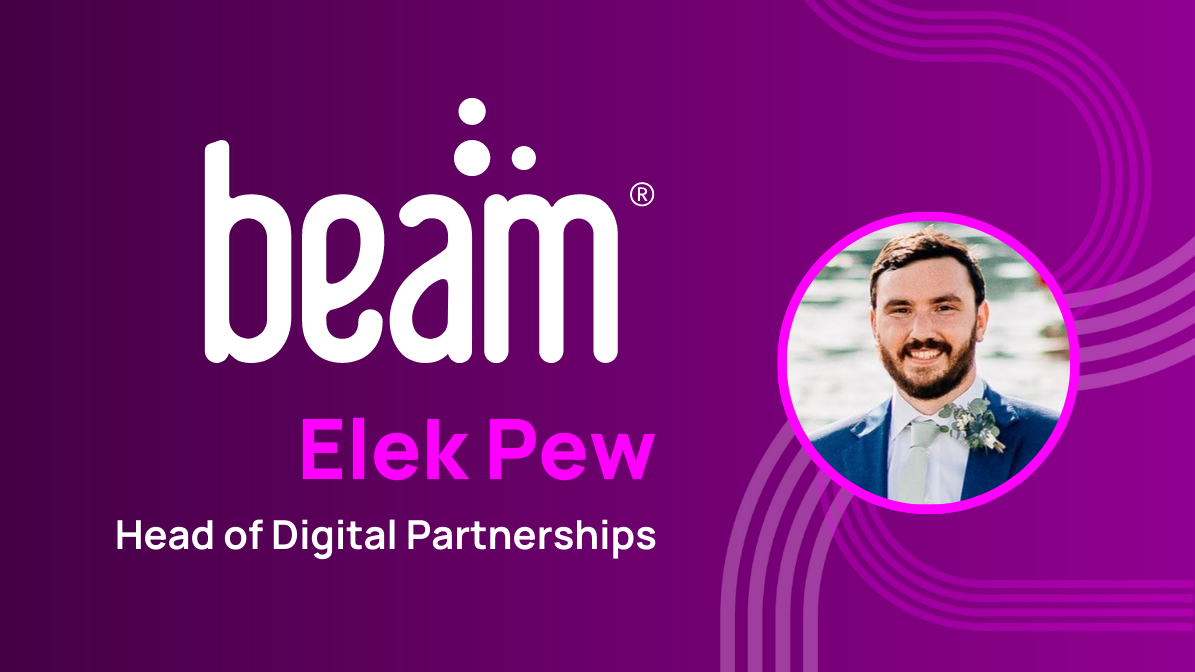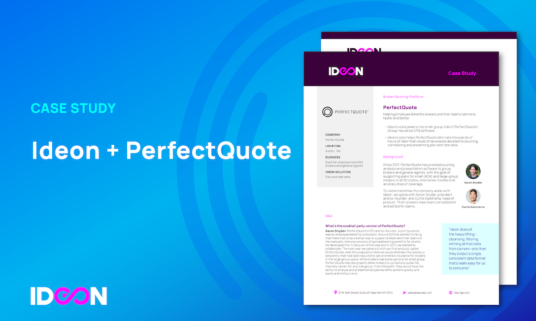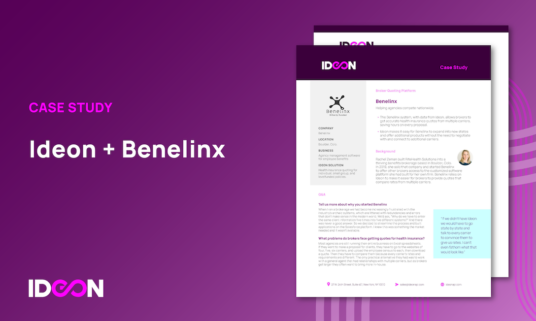Ideon Blog
April 12, 2023
By: Ideon
Ideon Insights: Beam’s Elek Pew talks distribution strategy as a tech-focused carrier

Welcome to the second episode of Ideon Insights, our monthly interview series featuring thought leaders and innovators driving the benefits industry forward. In this episode, we had the pleasure of speaking with Elek Pew, Head of Digital Partnerships at Beam Benefits, an ancillary benefits provider known for its innovation and digital-first approach.
In this Q&A, Elek provides insights into the evolution of the benefits technology ecosystem and the unique advantages that come with being a digitally native carrier. He also delves into how Ideon complements and enhances Beam’s digital distribution strategy, enabling seamless integration and collaboration within the industry.
For Elek’s complete thoughts on digital distribution, partnership strategy, and more, watch the video here.
Below we’ve highlighted six key moments from the conversation.
IDEON: How has the transformation of benefits technology informed your distribution strategy?
ELEK PEW: Technology is really at the forefront of everything today. Efficiency is king, especially in the small group market. We see that brokers care most about being really quick and efficient, so we pride ourselves on meeting those distributors where they are — whether that’s XYZ quoting or enrollment platform, or Beam’s own digital tools.
If they use a third-party system to quote business, we’ll find a way to integrate with that platform whether it’s through Ideon or directly. We’ll meet them where they are.
The benefits ecosystem is getting more complex. How do you choose the right partners?
There are a few things we think about when it comes to partnership strategy.
-
- Do we potentially have access into a limited marketplace, where Beam is one of three or four benefits providers?
- What does the partner’s technology stack look like in terms of their ability to integrate? If a new partner comes to us and says, “we’re already integrated to Ideon” — that’s great for us. We know there’s not a ton of work to activate that new partner, compared to a net-new direct connection.
- How do they think about API connectivity? Are we living in a file-based world? We’ll meet people where they are, but that’s definitely something we think about.
- Are they willing to offer all of our product lines? Beam was historically a dental-first company, but now we’re focused on Beam as an ancillary benefits provider.
How does Ideon fit into your distribution strategy?
We definitely see the value in the partnership with Ideon from a middleware standpoint. As Beam has transitioned from Beam Dental to Beam Benefits — bringing on voluntary life, accident, hospital, and critical illness — our ability to turn those products on through one connection to multiple players in the ecosystem is game-changing. It’s a powerful thing that we want to continue to invest in.
We’ll connect to third-party platforms directly if that’s their preferred method, but we’ll meet folks where they are. Some will say, “we want to connect through Ideon,” and we’re more than happy to make that happen. It makes our jobs a lot easier knowing we have a trusted player in the middle, ensuring that our data is presented accurately and the data Beam gets back is in top fashion.
What are the advantages of being a newer, tech-focused benefits carrier?
Beam is well positioned in the market because, at our core, we’re a digitally native company. The idea of exposing our core functionality—enrollment, admin, quoting, etc.— and embedding our products into the benefits ecosystem really is inherent in how Beam has built core capabilities.
We’re able to go to market really quickly with new platform integrations because we’ve built our systems with the concept of exposability in mind. Now that the market is moving to third-party platforms, we’re well positioned to be able to connect and meet distributors where they are in the marketplace.
Why are rating APIs valuable for Beam and brokers?
Without a rating API, rates could only change once per quarter and it didn’t allow for customization — rates were prepackaged.
With a rating API like the one we’re building with Ideon, we’re able to take in real-time census information and generate a rate based on that specific employee population. We’re able to arrive at much sharper rates because we have more information about the group. It also enables our back office operations to be more efficient because we receive information about the group from that initial employee census.
With an API, we know it will only return rates and plans where Beam will 100% be able to offer the plan — rates are always bindable.
What’s a benefits technology trend you’re excited about over the next few years?
Instantaneous policy issuance — Beam is moving there, and I think the benefits industry overall will move that way, following in the footsteps of the P&C space. The group installation process is still painfully manual today.
The industry has made a lot of progress in terms of carriers accepting enrollment information from platforms and loading it into carrier systems, and we’re seeing instantaneous quoting making its way to the market with rating APIs. The next step is to bridge the gap between the two — take a quoted product, win it, turn it into a bindable policy, then have it ready for employees to enroll in coverage. That experience — quote to bind to enroll — we’re now seeing the foundation that will allow us to get there.
Stay tuned for new episodes of Ideon Insights each month. Subscribe to our newsletter below to stay in-the-know about Ideon and receive our latest content directly to your inbox.


